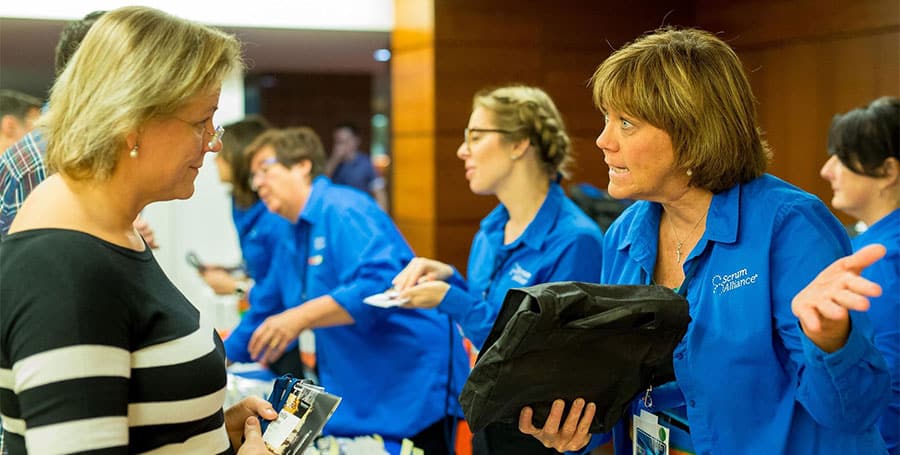Agile and Scrum Are Far Bigger than IT

Thermo Fisher Scientific, the world’s largest maker of laboratory equipment, recently implemented the Agile framework called Scrum for a new and challenging development project. The company found that it improved collaboration, helped motivate team members by letting them see the big picture, and — perhaps most important to the bottom line — kept them on schedule.
As the world of business moves ever more quickly, any number of established companies are taking on new ways of working. So it’s notable, but not totally surprising, when a company with more than 50,000 employees and $17.5 billion in annual revenue starts talking about Agile.
Except that, when I said “development” project, you probably assumed I was talking about software and the IT team. This was a hardware project.
It’s true that the Agile mindset — and the Scrum framework that helps businesses adopt Agile to help their teams move and learn faster — grew out of the information technology industry, and that it continues to make a major impact on how software development work is done. But these ideas are spreading far beyond their roots to influence the way work is done across the entire organization. In fact, the principles and practices at the core of both the Agile mindset and Scrum framework are applicable to almost any team in any specialty in any industry.
At its core, Agile is about priorities, with a manifesto that puts individuals and interactions above processes and tools, working products above comprehensive documentation, customer collaboration above contract negotiation, and responding to change above following a plan.
All of these ideas are applicable across an entire organization — not just within the IT team. It’s important for us to remember that fact, or we risk limiting these tools. When we talk about “transforming the world of work,” we mean the whole world of work, not just one industry!
We see this playing out in the world of Agile and Scrum training. While more than 60% of the Scrum Alliance members surveyed for our 2016 “State of Scrum” report work in IT/software development departments, the larger organizations for which respondents work cover a range of industries, from finance to health care to government to telecommunications, as well as IT. What that means is that there are plenty of other workplaces where these principles can be applied.
The results of Thermo Fisher’s nine-person pilot program in hardware have been so positive that Senior Manager Marisa Richardson told AgileVox magazine that the company “would like to experiment with a bigger project, a distributed team, and continue to evolve with these variables.”
HR is another sector ripe for Agile. “Look closely at HR, and you’ll soon see that how we work is rooted in the Industrial Age,” said Fabiola Eyholzer, who runs the HR consulting firm Just Leading Solutions, in a conversation with AgileVox magazine this fall. “A lot of the concepts are 50 and 60 years old and just don’t work anymore.”
She argues that because continuous feedback is a fundamental part of the Agile mindset, businesses can eliminate the artificial annual performance review process — reducing unnecessary stress and misaligned incentives for both employees and managers.
Continuous feedback helps projects run more smoothly and promotions and salaries become a truer reflection of comprehensive growth, rather than performance against a narrow set of rigid, and often random, metrics. The result is a workforce made up of employees who are not only happier but also better situated to grow and thrive.
That’s not to say there aren’t challenges to implementing Scrum and Agile in new sectors of a business. Changing a company or department’s fundamental culture is hard, and this year’s “State of Scrum” report identified organizational design and culture and the transition out of traditional mindsets as the top challenges to Agile adoption.
In addition to other possible hurdles virtually any company could face — such as not having enough personnel with Agile experience to lead transformation, or not enough management support for such a shift — each industry and sector will have its own unique challenges in adopting the Agile mindset.
In hardware development, Thermo Fisher has found that it’s not easy to add functionality over time or to test the product iteratively — both of which are standard parts of Scrum in software-development settings.
On the HR side, Eyholzer noted that there are challenges rooted in the fact that “there’s a fundamental misalignment between Agile thinking and traditional HR processes and procedures.”
But if there’s any mindset that’s suited for adaptation, it’s Agile. The word itself speaks to flexibility and adaptability, and practitioners like Thermo Fisher and Just Leading Solutions, among many others, are adapting Agile and Scrum to their fields. Importantly, they’re doing so without compromising the principles of either, because the benefits Agile and Scrum provide are well worth the disruption they can cause to the status quo.
“[I]t’s really about bringing HR into the 21st century and helping companies create workplaces where people can engage and grow,” Eyholzer said. “And it’s not just a nice notion — this is hardcore good business, because if you have people who are engaged, empowered, and passionate about what they’re doing, they’re much more productive.”
The question is this: If these concepts can be adapted to the hardware development or human resources fields, can they be tailored to apply to most other business endeavors and business models? The answer is easy: Yes, they can.
More important than whether they can be applied to other endeavors and models is whether they should be applied elsewhere, and the answer remains the same: an emphatic yes.
As technology continues to advance and societal attitudes continue to shift, companies must adapt to remain competitive for both customers and employees. Rigid obsession with processes and a strict plan prevents companies from changing as quickly as they need to change to meet consumers’ and workers’ evolving needs and expectations.
The Agile mindset, in contrast, allows companies to create better work environments for their teams and deliver better experiences for their customers. The result is happier employees and happier customers, both of which contribute to the bottom line.
Have you read?
5 Reasons to Replace Your PCs with Thin Clients
Are you Leaking Time?
Albert Einstein’s 40 Greatest Quotes
Indispensability of Change Management in Digital Transformations
Written by: Manny Gonzalez, Chief Executive Officer, Scrum Alliance.
Bring the best of the CEOWORLD magazine's global journalism to audiences in the United States and around the world. - Add CEOWORLD magazine to your Google News feed.
Follow CEOWORLD magazine headlines on: Google News, LinkedIn, Twitter, and Facebook.
Copyright 2025 The CEOWORLD magazine. All rights reserved. This material (and any extract from it) must not be copied, redistributed or placed on any website, without CEOWORLD magazine' prior written consent. For media queries, please contact: info@ceoworld.biz











